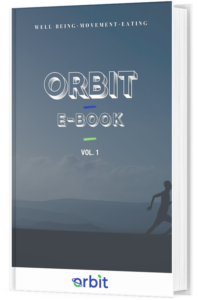Most people who do hard work or exercise in the heat may think they have had a heat stroke, but chances are, they have had a heat exhaustion.
The main difference between heat exhaustion and heat stroke is the consequences of each. While a heat stroke has consequences that can leave someone with a fragile and life threatening health, a heat exhaustion tends to be less severe and the consequences are shorter term. It is important to understand that the main relationship between them is that heat exhaustion can lead to heat stroke if left untreated.
To better understand the distinctions, it is key to identify and classify both heat related illnesses.
Heat Exhaustion Definition 4
Heat exhaustion is difficult to differentiate from the early signs of heat stroke. Actually, heat exhaustion is more common and it is when the body temperature gets between 37-40 °C. The most significant sign of heat exhaustion is heavy and consistent sweating with some changes in mental capability like poor judgement or being irritable.
Further, the other associated symptoms are dizziness, nausea, and headaches. The biggest danger of heat exhaustion is the potential for it to progress into a life-threatening heatstroke. Yes, heat strokes can be life-threatening.
Heat stroke Definition 1,3
In general, there are two ways to classify heat strokes. The first is exertional heat stroke, which happens in people doing sports or strenuous physical activity. The second is non-exertional heat stroke that can occur without physical activity. The non-exertional type is seen in people that have associated health risks like hypertension, renal disease, and diabetes.
Heat stroke can be defined as a core body temperature that climbs above 40 °C, combined with physiological impacts that can include central nervous system abnormalities. Usually, it also sees an inflammatory response that leads to the dysfunction of many organs. Subsequently, it can lead to severe organ failure which can be critical for someone’s life.
Is it Easy to Get a Heat Exhaustion or Heat Stroke? 4
There are many factors that can make it easier or harder for someone to get a heat exhaustion and potentially a heat stroke. Here are some factors that affect the likelihood of getting affected by the heat:
Factors that reduce risk:
- Better Fitness – “Fitter” individuals will have better blood circulation which helps in Thermoregulation.
- Heat Acclimation/Acclimatization – People acclimatized to heat will have a higher threshold for heat illnesses.
- Proper Hydration – Keeping good amounts of water and salt in the body.
Factors that increase risk:
- Children– Children are less heat-tolerant since they have a greater skin surface area to body mass ratio (more skin surface for the heat to enter).
- Chronic Disease – People with chronic disease usually have limited exercise tolerance which limits thermoregulation abilities.
- Type 2 diabetes – People with type 2 diabetes have less tolerance to heat as they have reduced skin blood flow, which reduces their ability for proper heat transfer with the environment.
- Hypertension – Poor blood distribution and blood pressure regulation. This negatively affects thermoregulation.
“Children, older adults, and those with chronic health conditions demonstrate less tolerance to heat due to an impaired ability to dissipate heat and maintain adequate hydration”
Kenny et al., 2018
It is not easy for most people to get heat related illnesses. However, it is something that can affect anyone at any age depending on the context. Specifically, the above factors are those that can make people more or less likely to get those illnesses.
How Do Heat Strokes Happen? 3
The human body is fascinating. It conducts a physiological process known as homeostasis constantly. Homeostasis incorporates many processes but one of those is thermoregulation. Thermoregulation means that our body regulates its temperature consistently to maintain a temperature of 37 degrees Celsius.
The body keeps a temperature of 37 degrees Celsius through physiological mechanisms like sweating, radiation, convection and more.
When the body’s temperature starts to increase, the first mechanism to kick in is sweating. Through sweating, the body loses salt and water which begins dehydration. This is the first step towards heat exhaustion and cramps. If so, it can be avoided with the right combination of salt and water.
When experiencing a heat stroke, a person begins to lose more salt and water, which means that thermoregulation is affected. After thermoregulation is affected, less blood can be sent effectively to the skin and muscles. Then, it may cause organs to fail. This is why heat strokes, by definition, are characterized by multiple organ failures.
Heat Exhaustion Treatment 4
The quick rule of thumb is to reduce the body’s heat progression. Some common ways to do so are:
- Immersion in cold water
- Applying cold towels
- Rehydration – electrolyte drinks
These methods of treating heat exhaustion are critical and should be assessed by medical professionals.
Heat Stroke Treatment 2,3
The best treatment for heat strokes is prevention. Being cautious of drinking the right fluids and of the hot outdoor temperatures are much easier alternatives than the treatments after the heat stroke has occurred.
There are many ways in the short and long term that can treat such a severe heat related condition. In the short/immediate term, cooling methods are necessary and then the affected organs need to be treated.
The most common short-term techniques are aimed at cooling the body. These are some of the most common cooling methods:
- Tap-water immersion
- Ice-water immersion
- Cooling blankets
- Iced gastric lavage
- Ice pack on parts of, or whole body
In the long term, heat strokes are difficult to treat. As mentioned earlier, heat stroke is a multi organ failure condition which means that the long-term effects can be very debilitating. Therefore, much of the long-term treatments to heat strokes are aimed at “fixing” the organs that failed.
What Next?
If you are an endurance athlete or someone who works outside in the blazing sun for prolonged periods of time, it is important to think about the risk of heat related illnesses. When out for your physical activities in the heat, always bring your drink with you.
If possible, take breaks to bring your heart rate down. This will help your body circulate its blood more efficiently and will reduce the chance of thermoregulation being affected.
Finally, if you are someone with chronic diseases or an already fragile health situation, it is crucial that you be careful even without demanding physical exertion. Heat exhaustion and stroke can happen even without strenuous activities!





